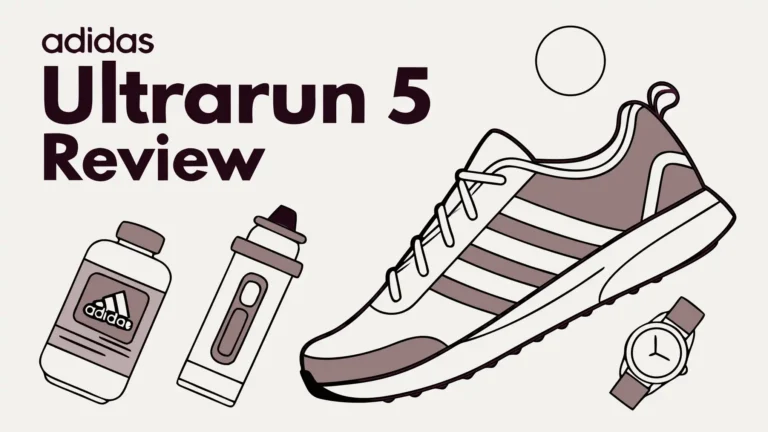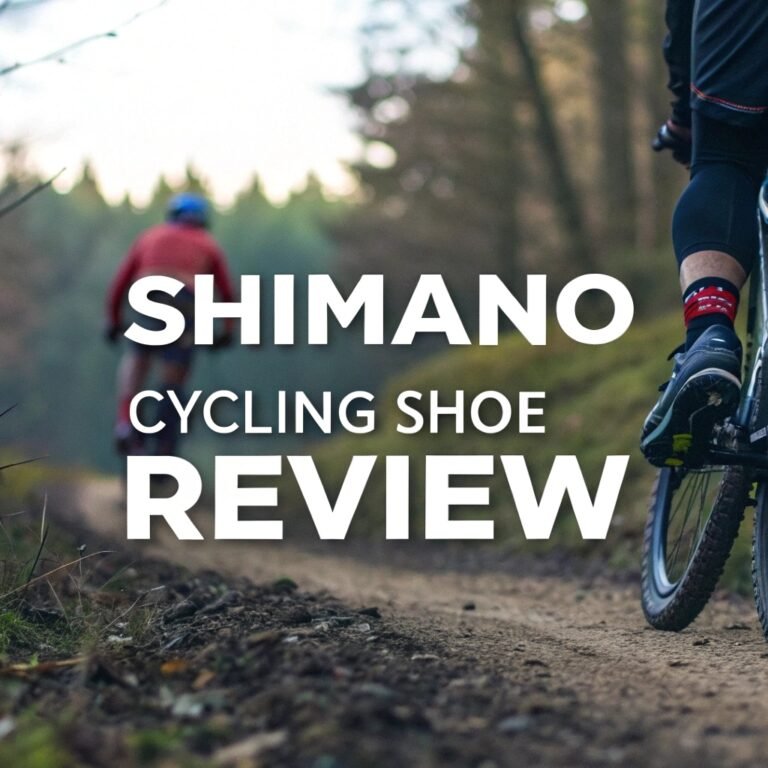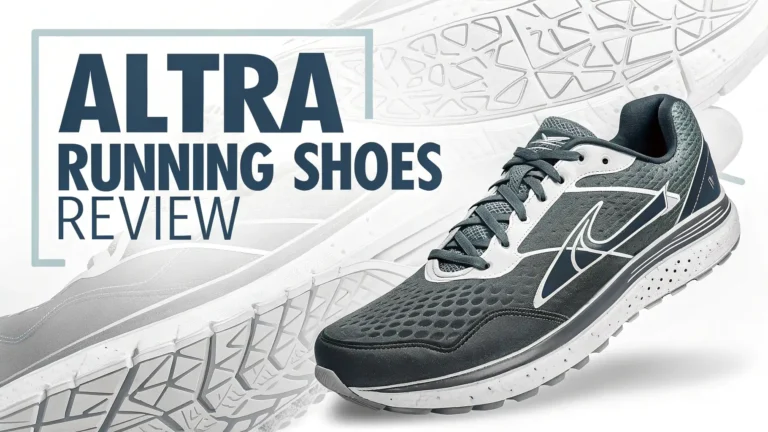Patagonia Wading Boots Review: Performance, Durability and Value
Fishing demands the right gear. You need boots that keep you safe on slippery rocks. You need boots that last through tough conditions. You need Patagonia wading boots for your next fishing adventure.
In this Patagonia wading boots review, we dive deep into their top models, features, and realworld performance. From the rugged Foot Tractor to the lightweight Forra, we have got you covered with everything you need to know.
Stick around to discover why Patagonia is a goto choice for anglers and how their boots can transform your fishing adventures.

In a Nutshell:
Before diving into the details, here are the essential points about Patagonia wading boots that will help you make an informed decision:
- Built to Last: Patagonia partners with renowned bootmakers like Danner to create extremely durable fishing boots that can be resoled and maintained for years
- Three Main Models: The lineup includes the Foot Tractor (heaviest, most durable), River Salt (mid-weight for fresh and saltwater), and Forra (lightweight for hiking and fishing)
- Premium Materials: The boots feature full-grain leather or synthetic materials with Vibram soles for superior traction on wet surfaces
- Sizing Runs Large: Most users recommend going with your regular street shoe size or even sizing down, unlike many competitors that require sizing up
- Price Premium: Starting at $299 for the Forra and up to $500+ for the Foot Tractor models, these boots cost more upfront but provide better long-term value through their repairability
- Eco-Friendly Focus: True to Patagonia’s mission, these boots are designed with sustainability in mind and backed by the company’s strong environmental activism
- Application-Specific Design: Each model is engineered for specific fishing environments from rocky riverbeds to saltwater flats
- User Experience: Fishermen consistently praise the exceptional comfort and reliable traction even after long days on the water
- Potential Downsides: The premium price and weight (particularly of the Foot Tractor) are the most common concerns
- Maintenance Requirements: These boots, especially the leather models, need proper care to maintain their performance and extend their lifespan
The Evolution of Patagonia Wading Boots
Patagonia has built a strong reputation in the fishing community. The company started making fishing gear years ago. Their focus has always been on quality and durability. Patagonia wants to make products that last.
The wading boot lineup features three main models. Each model serves a specific purpose. The Foot Tractor is the toughest option. The River Salt works well in fresh and salt water. The Forra is lightweight for hiking and fishing.
Patagonia partners with Danner for some models. Danner brings boot-making expertise to the table. This partnership creates boots that can be repaired rather than replaced. This approach fits with Patagonia’s environmental values.
The Foot Tractor: Ultimate Support and Protection
The Foot Tractor boot stands as Patagonia’s flagship wading boot. Built in partnership with Danner, it offers exceptional durability and support. The name says it all – these boots grip the riverbed like a tractor grips soil.
The construction features full-grain leather with nylon panels. This combination creates a boot that stands up to harsh conditions. The stitchdown construction allows for resoling when the bottom wears out. This feature alone makes the Foot Tractor a long-term investment rather than a temporary purchase.
Weight is the main trade-off with the Foot Tractor. At 68.8 ounces, they are heavier than many competitors. This weight provides stability but can be tiring during long hikes. The Foot Tractor works best for anglers who prioritize durability and traction over lightweight design.
Sizing runs roomy on these boots. Many users report needing to size down from their usual wading boot size. Patagonia acknowledges this and recommends choosing your regular street shoe size. This differs from many wading boots that require sizing up.
The Foot Tractor comes in three sole options: sticky rubber, felt, and aluminum bar. The aluminum bar version offers the most grip in slippery conditions. The sticky rubber works well for general use. Felt provides good traction but is banned in some states due to invasive species concerns.
The River Salt: Versatile Performance for Multiple Environments
The River Salt boot fills the middle ground in Patagonia’s lineup. It weighs less than the Foot Tractor at 56.2 ounces. This weight reduction makes it more suitable for longer approaches and wade fishing in warm conditions.
The River Salt truly excels in versatility. It performs well in both freshwater and saltwater environments. The materials resist corrosion from salt exposure. This makes the River Salt ideal for anglers who fish in multiple environments.
The boot features a full-grain leather upper with drainage ports. These ports allow water to escape quickly. This design helps the boots dry faster between uses. Quick-drying boots prevent mildew growth and extend the lifespan of the footwear.
Comfort stands out as a strength of the River Salt model. Users report that the boots feel broken in from the first use. The fit allows for thick socks in cold conditions. The ankle support prevents fatigue during long days on the water.
The River Salt uses Vibram Megagrip soles for traction. This rubber compound works well across various surfaces. The sole design includes lugs that shed mud and debris. The boots can also accept studs for additional grip in challenging conditions.
The Forra: Lightweight Champion for the Mobile Angler
The newest addition to Patagonia’s wading boot lineup is the Forra. This boot addresses the need for a lightweight option that doesn’t sacrifice durability. At just 41 ounces, the Forra weighs significantly less than its siblings.
Made in Italy by Fitwell, the Forra features synthetic leather and mesh materials. This construction allows for quick drying and reduced weight. The design includes reinforced toe and heel caps for protection against rocks and abrasion.
The Forra uses Vibram Mars sole technology with XS Trek compound. This combination provides excellent traction on varied terrain. The aggressive tread pattern works well for hiking to remote fishing spots. The Forra truly bridges the gap between hiking boot and wading boot.
The sizing on the Forra runs small compared to other Patagonia models. Most users recommend sizing up at least one full size. This differs from the Foot Tractor and River Salt, which tend to run large. Always check the sizing chart before purchasing.
The Forra costs less than other Patagonia wading boots at $299. This price point makes it more accessible while maintaining Patagonia’s quality standards. The Forra represents a good entry point into Patagonia’s wading boot lineup.
Material Selection and Construction Quality
Patagonia doesn’t cut corners on materials. The boots use premium components throughout. This quality shows in the performance and longevity of the products.
The Foot Tractor and River Salt models use full-grain leather. This leather provides durability and molds to your foot over time. The leather requires maintenance but rewards proper care with extended lifespan.
The Forra uses synthetic materials that offer benefits of their own. The synthetic upper dries quickly and weighs less than leather. It also requires less maintenance while still providing good durability.
All models feature Vibram soles with different compounds for specific applications. Vibram has earned its reputation for quality in outdoor footwear. The soles provide reliable traction in challenging conditions.
The stitching and construction details reveal Patagonia’s commitment to quality. The boots feature reinforced stress points and quality control that exceeds industry standards. Every aspect of construction aims for durability rather than meeting a price point.
Comfort and Fit Considerations
Comfort matters during long days on the water. Patagonia designs their boots with all-day comfort in mind. The boots include features that prevent fatigue and discomfort.
Ankle support varies between models. The Foot Tractor offers the most support for technical wading. The Forra provides a snug fit that prevents debris entry while maintaining flexibility.
The toe box design allows room for neoprene booties and thick socks. This space prevents cramping and cold feet during winter fishing. The lacing systems allow for customized fit throughout the foot.
Break-in time varies between models. The leather boots may require some break-in, though many users report they feel comfortable immediately. The Forra typically feels ready to go right out of the box.
Proper sizing makes a huge difference in comfort. Try the boots with the socks and waders you plan to use. Remember that Patagonia’s sizing differs from some competitors. The Foot Tractor and River Salt run large, while the Forra runs small.
Performance in Different Fishing Environments
Different fishing environments place unique demands on wading boots. Patagonia designs each model for specific conditions. This specialization helps anglers choose the right tool for their needs.
Rocky rivers benefit from the stability of the Foot Tractor. The aluminum bar version excels on slippery rocks and mossy streambeds. The boot’s weight works as an advantage in strong currents.
Coastal fishing and saltwater flats call for the River Salt. The corrosion-resistant design prevents damage from salt exposure. The boot drains quickly when moving between water and shore.
Long approaches and small streams suit the Forra best. The lightweight design prevents fatigue during hikes. The boot still provides enough support for technical wading once you reach the water.
All models perform well in varied temperatures. They accommodate different sock thicknesses for seasonal adjustments. The boots maintain their traction properties in cold and warm water.
Traction Technology and Safety Features
Traction ranks as the most important safety feature in any wading boot. Patagonia uses different approaches to keep anglers upright in challenging conditions.
The Vibram rubber compounds provide baseline traction. Each model uses a specific compound matched to its intended use. These rubber formulations grip wet surfaces better than standard hiking soles.
The aluminum bar system in the Foot Tractor creates mechanical grip. The bars dig into soft surfaces and create friction on hard surfaces. This system works exceptionally well in specific conditions but adds weight.
Studs provide additional traction options for all models. Patagonia offers stud kits designed for their boots. The strategic placement of studs enhances grip without compromising the sole’s integrity.
The boots include safety features beyond traction. Ankle support prevents injuries during awkward steps. Toe and heel reinforcement protect against impacts. The quick-draining design prevents waterlogging that could affect stability.
Price vs. Value: The Long-Term Investment Perspective
Patagonia wading boots cost more than many competitors. The Foot Tractor starts around $500, the River Salt at $400, and the Forra at $299. These prices represent a significant investment for many anglers.
The value proposition centers on longevity and repairability. The Foot Tractor and River Salt can be resoled through Danner. This service extends the life of the boots for years beyond typical wading boots.
Over a five-year period, one pair of Patagonia boots might outlast two or three pairs of less expensive options. This durability changes the value equation significantly. The initial investment provides returns through consistent performance and reduced replacement costs.
Patagonia’s warranty adds value to the purchase. The company stands behind its products with excellent customer service. This support reduces the risk associated with the premium price point.
Environmental considerations also factor into the value equation for many anglers. Patagonia’s commitment to sustainability means your purchase supports conservation efforts. The company donates a percentage of sales to environmental causes.
Care and Maintenance for Extended Lifespan
Proper care extends the life of any wading boot. Patagonia boots respond particularly well to regular maintenance. A few simple habits can add years to your boots’ lifespan.
Rinse boots thoroughly after each use. This practice removes sand, salt, and debris that could cause premature wear. Pay special attention to the sole and seams where particles collect.
Allow boots to dry completely between uses. Avoid artificial heat sources that could damage adhesives or materials. Stuff the boots with newspaper to speed drying and maintain shape.
Leather models benefit from occasional conditioning. Use products designed for outdoor leather goods. This conditioning prevents cracking and maintains water resistance.
Inspect boots regularly for damage or wear. Address small issues before they become major problems. Replace studs when they show significant wear to maintain traction.
Store boots in a cool, dry place away from direct sunlight. This environment prevents material degradation during off-seasons. Proper storage preserves the investment for future fishing seasons.
Comparing Patagonia to Other Major Wading Boot Brands
Patagonia competes with established brands like Simms, Orvis, and Korkers. Each brand brings strengths to the market. Understanding the differences helps anglers make informed choices.
Simms offers excellent quality across various price points. Their G3 Guide Boot provides a direct competitor to the Foot Tractor. Simms tends to focus on technical performance for dedicated anglers.
Orvis combines tradition with innovation in their boot lineup. Their Pro Wading Boots compete with Patagonia’s offerings at lower price points. Orvis products typically deliver good value for the cost.
Korkers stands out for their interchangeable sole system. This feature allows anglers to swap between felt, rubber, and studded options. The system provides versatility that Patagonia boots lack.
Patagonia differentiates through their repairability and environmental focus. Their partnership with established bootmakers results in exceptional build quality. The company’s environmental activism also appeals to conservation-minded anglers.
Real-World Performance: What Anglers Say
Anglers who use Patagonia boots consistently mention certain themes. Their real-world experiences provide valuable insights beyond marketing claims.
Comfort comes up repeatedly in user reviews. Anglers appreciate the boots’ support during long days on the water. Many report reduced fatigue compared to previous wading boots.
Durability earns praise from long-term users. Some report using the same pair of Foot Tractors for multiple seasons without significant issues. This longevity justifies the premium price for many users.
Traction performance varies by model and conditions. The aluminum bar Foot Tractors receive the highest marks for technical wading. The Forra earns praise for its performance during long approaches.
Weight concerns appear most often regarding the Foot Tractor. Some anglers find the boots too heavy for their needs. This feedback led to the development of the lighter River Salt and Forra models.
Sizing confusion shows up frequently in reviews. The inconsistent sizing between models creates challenges for online purchases. Most users recommend trying boots in person when possible.
Making the Right Choice for Your Fishing Style
Selecting the right Patagonia wading boot depends on your specific needs. Consider your fishing environment, physical condition, and budget when making this decision.
The Foot Tractor works best for anglers who prioritize durability and traction. It excels in demanding river conditions with slippery rocks. The weight penalty matters less if you don’t hike long distances.
The River Salt suits anglers who fish multiple environments. It performs well in both fresh and saltwater. The mid-range weight balances mobility and durability for varied fishing styles.
The Forra fits the needs of anglers who hike to remote fishing spots. The lightweight design prevents fatigue during long approaches. The boot still provides enough support for technical wading.
Your physical condition should influence your choice. Stronger anglers might not notice the weight of the Foot Tractor. Those with ankle or knee issues might prefer the lighter Forra for reduced joint stress.
Budget considerations may direct you toward the Forra as an entry point. This model costs significantly less than other Patagonia options. It still delivers the quality and performance the brand is known for.
Frequently Asked Questions
How do Patagonia wading boots fit compared to regular shoes?
Patagonia wading boot sizing varies by model. The Foot Tractor and River Salt tend to run large, while the Forra runs small. Most users find success with their street shoe size for the Foot Tractor and River Salt. For the Forra, sizing up one full size works best for most anglers.
Are Patagonia wading boots worth the high price?
The value comes from longevity and performance. The boots last longer than many competitors and can be repaired rather than replaced. Over several years, one pair of Patagonia boots might cost less than multiple pairs of cheaper boots.
Can Patagonia wading boots be used in saltwater?
Yes, Patagonia makes models specifically suited for saltwater use. The River Salt boot excels in both fresh and saltwater environments. The Forra also works well in saltwater due to its non-metallic components. Rinse thoroughly after saltwater use to prevent corrosion.
How long do Patagonia wading boots typically last?
With proper care, Patagonia wading boots can last 4-5 years or more with regular use. The Foot Tractor and River Salt models can be resoled through Danner when the soles wear out, extending their lifespan considerably.
What type of sole works best for slippery rocks?
The aluminum bar version of the Foot Tractor provides the best traction on slippery surfaces. For rubber-soled models, adding studs significantly improves grip on difficult terrain. Felt soles also work well but are banned in some regions.
Can I add studs to any Patagonia wading boot model?
Yes, all Patagonia wading boot models accept studs. The company sells stud kits specifically designed for their boots. The kits include installation tools and instructions for proper placement.
How do I maintain my Patagonia wading boots?
Rinse after each use, allow to dry completely away from heat sources, condition leather models occasionally, and inspect regularly for damage. Store in a cool, dry place when not in use. Proper maintenance extends the boots’ lifespan significantly.
Which Patagonia boot is best for hiking long distances to fishing spots?
The Forra is designed specifically for anglers who hike to reach fishing locations. At 41 ounces, it weighs significantly less than other Patagonia models while maintaining good support and durability.

Mia Smith is the founder of Shoe Storyteller, a blog that celebrates the art and stories behind shoes. With a passion for fashion and a flair for storytelling, Mia brings a unique perspective to the world of footwear.






